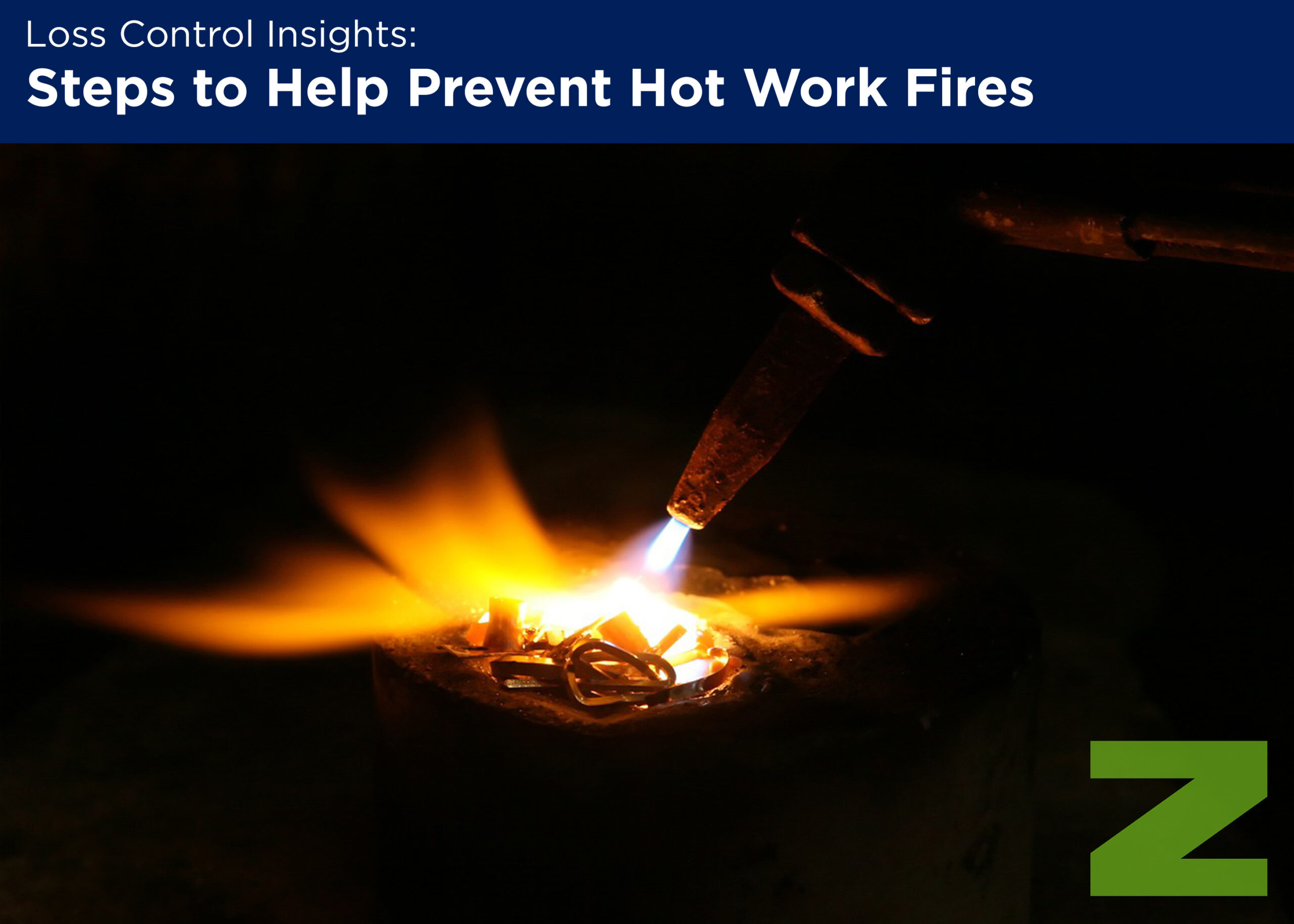Hot work doesn’t mean that workers are sweating in an extremely warm building or working out in the blazing summer sun. Rather, it involves performing tasks that can cause fires or explosions. These tasks include welding, grinding, cutting, brazing, soldering, and similar operations which produce heat and sparks.
These sparks are extremely mobile, scattering as far as 35 feet. They can fall through tiny openings in floors, walls and other barriers—and even enter the HVAC system ducts, traveling to another part of the building. When sparks make contact with combustible materials such as wood, paper, dry grasses and plants, plastic or chemicals they can cause fires or explosions.
What’s even more concerning, the fire often doesn’t start immediately. Sparks can smolder for hours, only to flare up long after the job is complete, and workers have moved on to other tasks or gone home after their shift.
If you think that fires can’t easily occur in this haphazard way, EMC Risk Improvement Senior Engineer Paul Porter suggests otherwise. “About 6% of industrial fires are caused by hot work,” he says, “and the National Fire Protection Association has estimated that 4,400 structure fires were started by hot work between 2010 and 2014.”
Many fairly routine tasks involve hot work, including these from the Insurance Institute for Business & Home Safety:
- Thawing or sweating air conditioning lines or frozen pipes
- Plumbing work on metal pipes
- Working on ductwork
- Repairing roof systems
- Renovating office or warehouse spaces or metal structures such as shelving or storage racks, railings, catwalks, stairs or fences
- Cutting metal containers or drums
Paul says that companies completing hot work in a designated hot work area generally get it right by screening off the area with protective curtains and keeping it clean and free of combustibles and other dangers. However, it’s when hot work is done on location in another part of the company or outdoors that problems arise. It’s easy to overlook potential dangers such as unmowed grass and weeds when working outside the building or wood pallets stacked too close to where the work takes place.
Paul’s safety recommendations include:
- If hot work isn’t a primary task in your company, you may not have a hot work program, including a hot work permit system. Develop your plan by using the EMC Hot Work Safety Program template to help guide you through the process. Find more information on hot work permits in this EMC Tech Sheet.
- Use these EMC Safety Briefs to help guide portions of your program, Hot Work: Welding and Cutting Safety and Hot Work in Confined Spaces.
- Follow National Fire Protection Association (NFPA) rules, found in NFPA 51B, Standard for Fire Prevention During Welding, Cutting and Other Hot Work. This is a summary of 51B. Find hot work safety background information in this fact sheet from NFPA.
- If you are performing hot work in your company, be sure that all workers understand the process and fulfill their roles in preventing fires and explosions. For example, follow your company’s written housekeeping program to routinely keep all areas clean and in a ready state for hot work. Good housekeeping ensures inside areas are free of combustible materials. Outside maintenance includes keeping areas weeded, lawns mowed, pallets stored properly, and dunnage organized away from areas where trucks might be parked and serviced. Managers, supervisors, operators and a fire watch all need to understand their part in protecting the building and coworkers.





